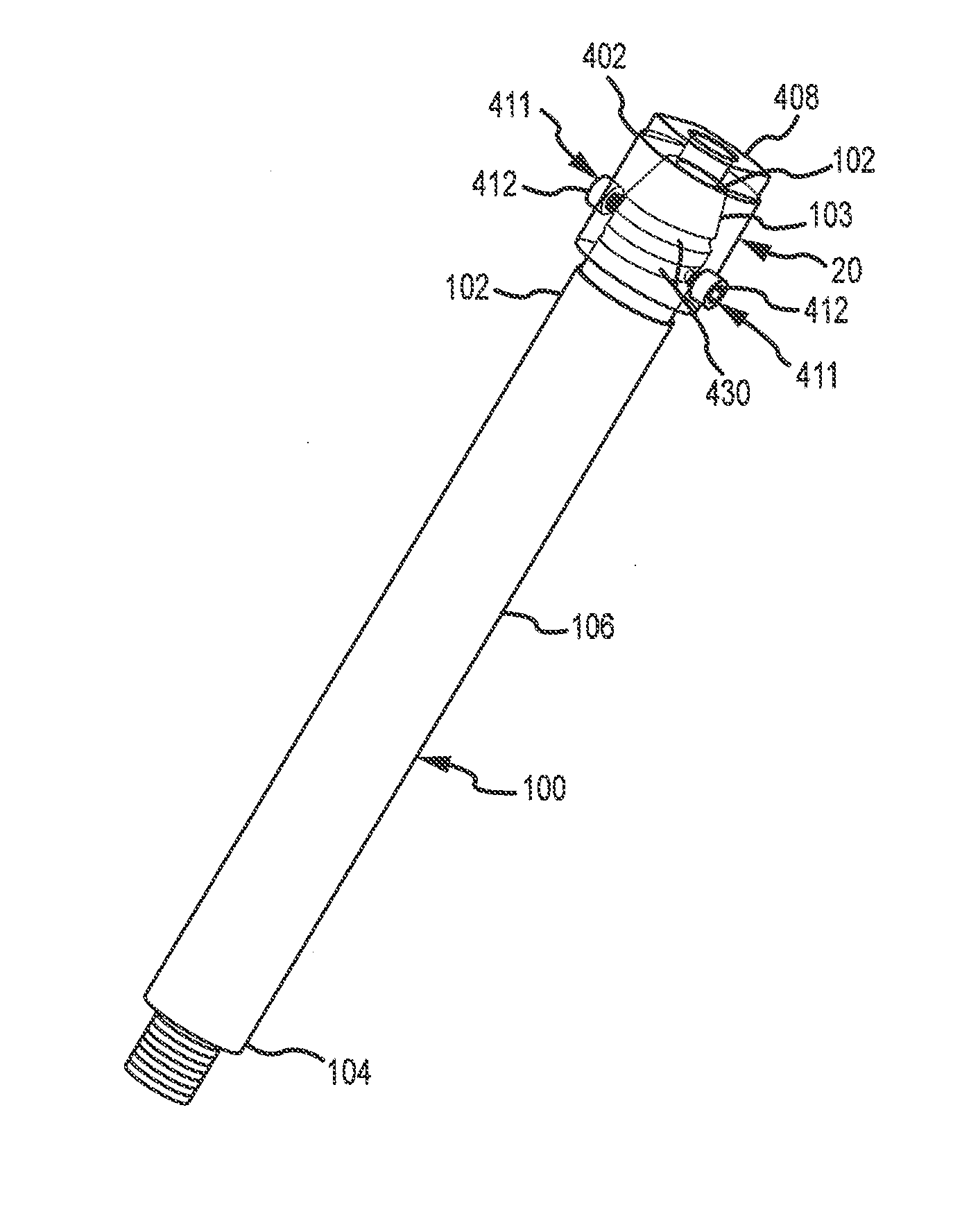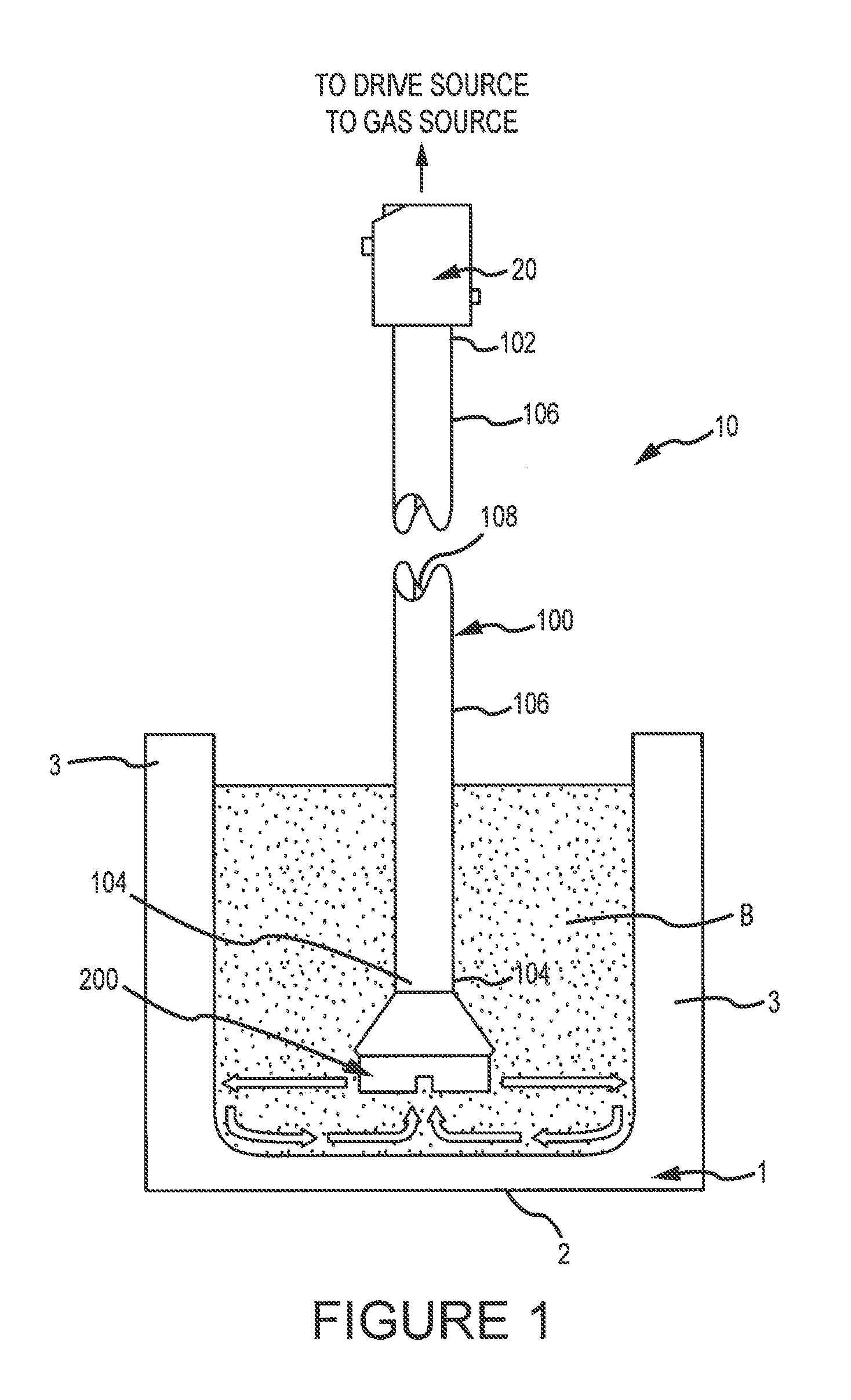Rotary degassers and components therefor
a rotary degasser and impeller technology, applied in the direction of charging, lighting and heating apparatus, furnaces, etc., can solve the problems of difficult to remove broken or worn impeller shafts, environmental hazards, and wear of graphite threads of impeller shafts
- Summary
- Abstract
- Description
- Claims
- Application Information
AI Technical Summary
Benefits of technology
Problems solved by technology
Method used
Image
Examples
Embodiment Construction
[0035]Reference will now be made in detail to the present exemplary embodiments of the invention, examples of which are illustrated in the accompanying drawings. FIG. 1 depicts a gas-release device 10 according to the invention. Device 10 is adapted to operate in a molten metal bath B contained within a vessel 1. Vessel 1 includes a bottom 2 and side walls 3. Vessel 1 may have any suitable size, shape, and configuration.
[0036]The exemplary rotary degasser 10 includes an impeller shaft 100 (also shown are shafts 100′ and 100″), an impeller 200 and a coupling 20 for coupling the impeller shaft to the motor shaft of a drive source (not shown). Impeller shaft 100, impeller 200, and each of the impellers used in the practice of the invention, are preferably made of graphite impregnated with oxidation-resistant solution, although any material capable of being used in a molten metal bath, such as ceramic, or non-impregnated graphite could be used. Oxidation and erosion treatments for graph...
PUM
 Login to View More
Login to View More Abstract
Description
Claims
Application Information
 Login to View More
Login to View More - R&D
- Intellectual Property
- Life Sciences
- Materials
- Tech Scout
- Unparalleled Data Quality
- Higher Quality Content
- 60% Fewer Hallucinations
Browse by: Latest US Patents, China's latest patents, Technical Efficacy Thesaurus, Application Domain, Technology Topic, Popular Technical Reports.
© 2025 PatSnap. All rights reserved.Legal|Privacy policy|Modern Slavery Act Transparency Statement|Sitemap|About US| Contact US: help@patsnap.com



